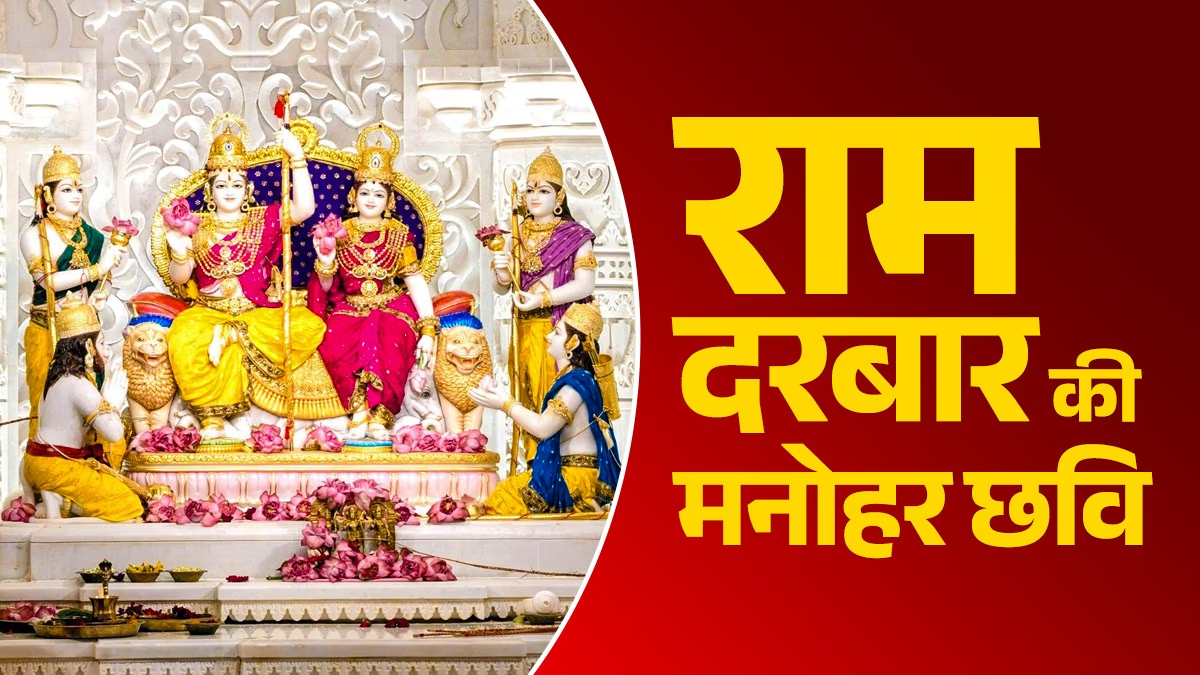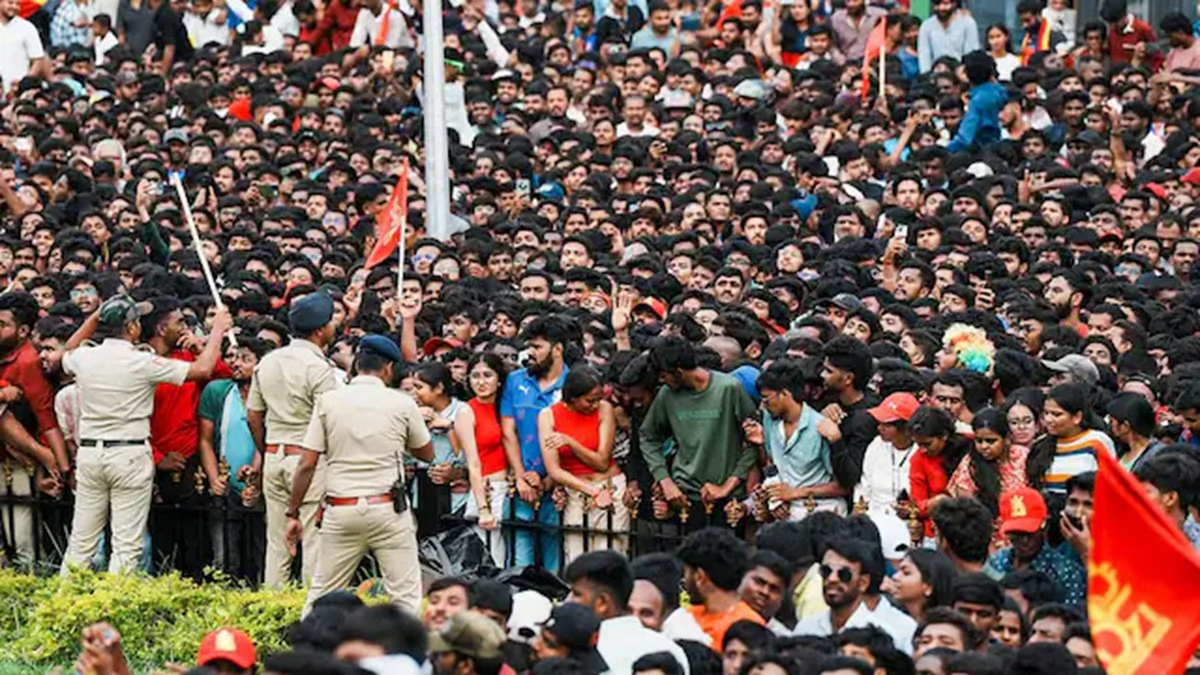The first glimpse of the grand Ram Darbar within the Sri Ram Janmabhoomi complex in Ayodhya has enveloped the entire nation in a unique spiritual aura. This divine scene was first unveiled and consecrated ceremonially by Uttar Pradesh Chief Minister Yogi Adityanath. The occasion was not merely a religious episode but a symbol of cultural awareness and the emotional unity of the nation.
Yogi Adityanath invited the divine presence into the idols of Lord Rama and other deities through chanting of Vedic hymns. On this occasion, he prayed to Lord Rama for the prosperity of the state, social harmony, and public welfare. This marks the second time that life-giving consecration of this grandeur has taken place in the Ram Temple, with the first installation of the idol of Ram Lalla occurring in January 2024.
The depiction of the Ram Darbar, where Lord Rama, Sita, Lakshman, Bharat, Shatrughna, and Hanuman sit together, has become a symbol of holistic spiritual philosophy, family values, and devotion.
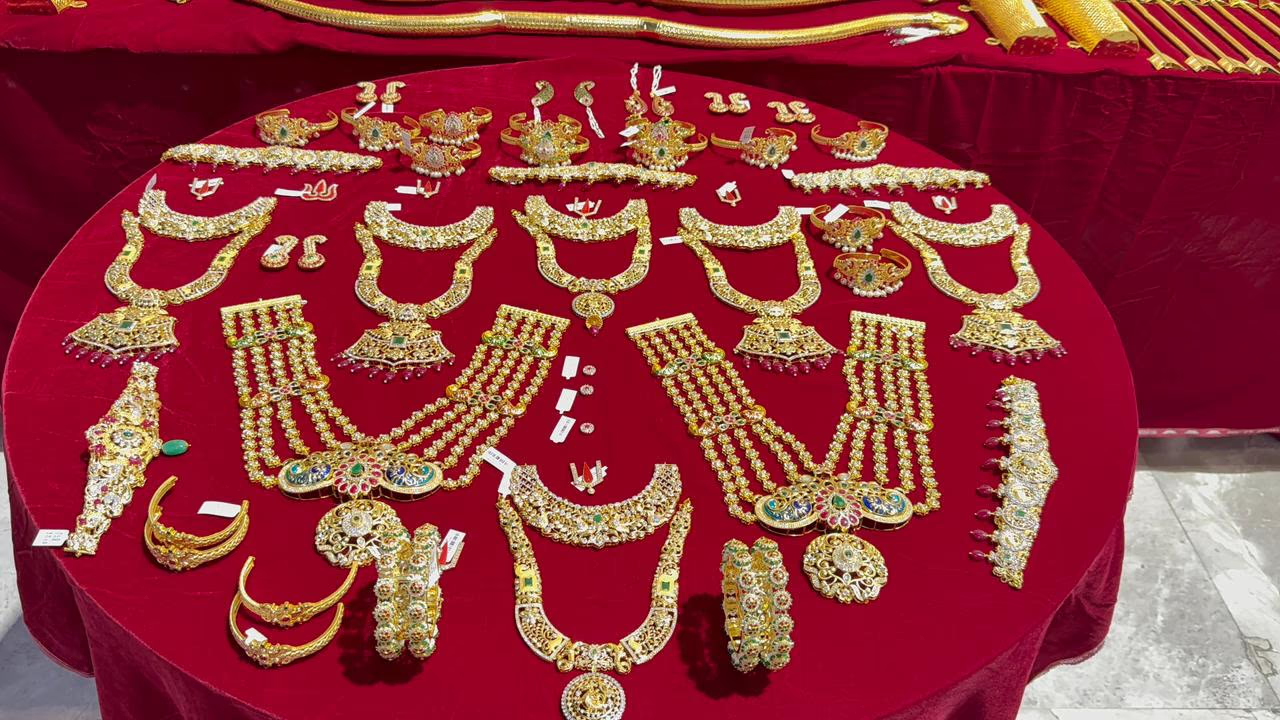
Source: aajtak
Lord Rama's Attire: The Grandeur of Kashi Silk and Regal Divinity
At the center of the Ram Darbar stands Lord Rama, epitomizing divine grandeur, composure, and ideal conduct. He wears traditional and opulent attire made from the renowned silk of Kashi, adorned with the delicate patterns of Bandhani, reflecting the exquisite beauty of Indian fabric craftsmanship. Fashion designer Manish Tripathi explains that Lord Rama's yellow silk dhoti symbolizes auspiciousness and purity while representing wisdom, intellect, and radiance.
The edges of the dhoti feature fine gold embroidery, adding to the garment's regal and majestic appearance. Draped across his chest is an angavastra, made from the same golden-yellow silk fabric, signifying his royal dignity and devout life.
On Lord Rama's head sits a jewel-encrusted golden crown, artistically designed with red, green, and blue gems. The crown's towering top symbolizes his realm. His ears are adorned with earrings, and his wrists and arms with bangles and armbands, while his neck bears necklaces of pearls, gold, rudraksha, and various gems, reflecting his magnificent divinity.
In his right hand, Lord Rama holds a lotus flower, symbolizing softness, compassion, and peace. This flower illustrates that while he is outwardly a powerful warrior, he possesses an inner gentleness, generosity, and tender heart. In his left hand, he carries a bow, representing his warrior duty, protector role, and readiness to fight for righteousness.
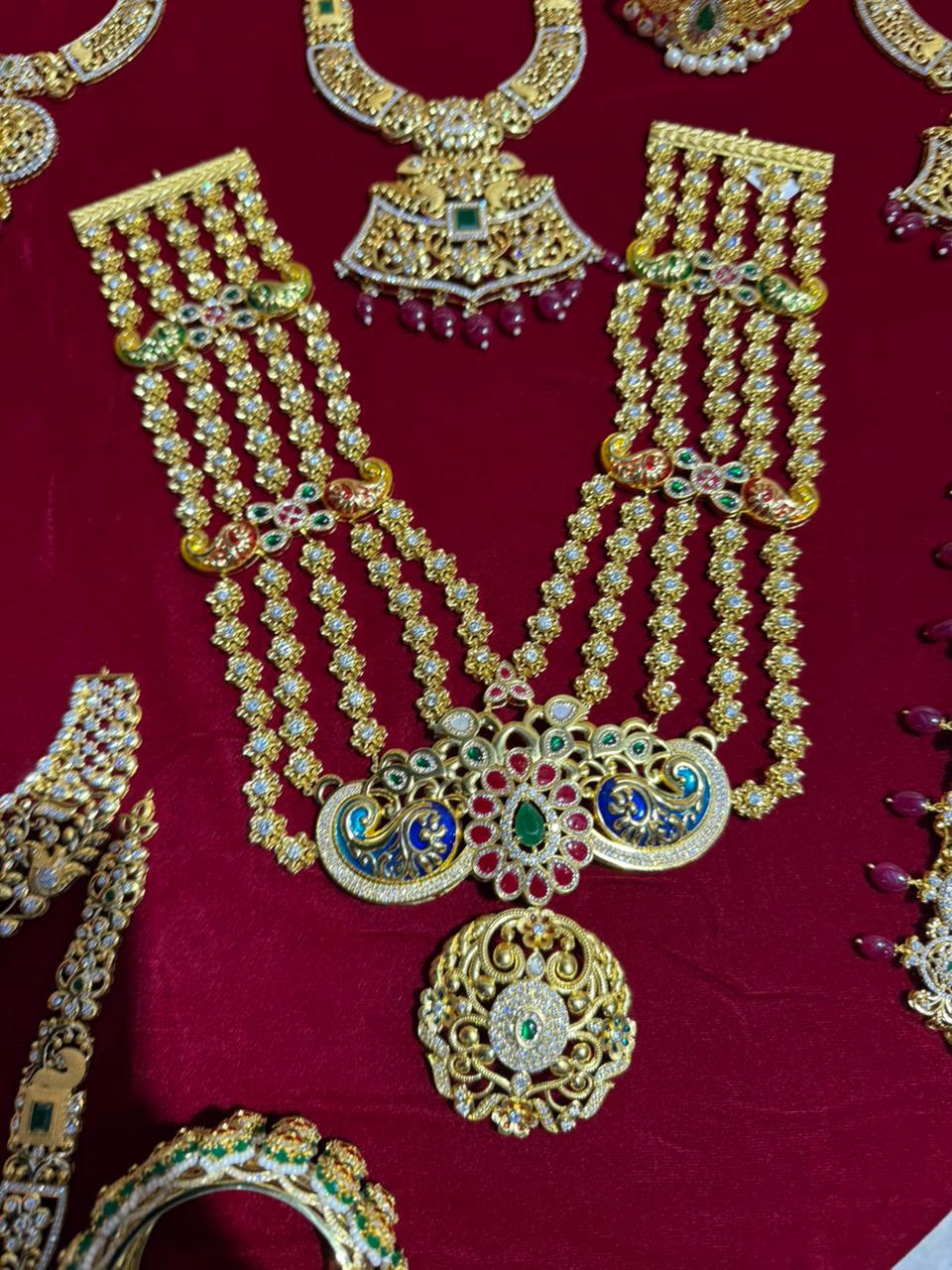
Source: aajtak
He sits gracefully on a throne in the lotus position, with two lions engraved at his feet, symbolizing courage and steadfastness. His face exudes tranquility, compassion, and brilliance, as if embracing the pain of the universe while never deviating from principle and justice. His demeanor shows neither anger nor arrogance, no excessive display of weapons, or extremes of luxury. This balance is what crowns him as 'Maryada Purushottam'—a king not just mighty but virtuous, devoted to his people, and a pillar of morality.
Goddess Sita's Apparel and Demeanor: Symbol of Sacrifice, Beauty, and Divinity
On the right of Lord Rama in the Ram Darbar sits Sita, not only a queen but the embodiment of the ideal Indian woman, devoted wife, sacrifice, and motherly love. Her attire is a reflection of traditional Indian royal heritage. She wears a deep pink silk sari from Kashi, adorned with fine Bandhani prints and intricate gold embroidery. This attire possibly draws inspiration from both sari and lehenga styles, with a waistband and pleats radiating a divine demeanor.
A jeweled golden crown adorns Sita Ji's head, with embedded gems—depicting her as the incarnation of Goddess Lakshmi. Her neck is graced with a gold necklace, pearl garland, and her wrists with bangles, armbands, waist with ornaments, and feet adorned with anklets—honoring her as both queen and goddess.
Her face exudes calm, gentleness, and love. Holding a lotus flower in her right hand, she embodies compassion, motherhood, and purity. Her eyes reflect love and blessing for devotees. Her posture signifies complete devotion and inner strength. Seated with Rama, Sita is not merely a wife but the 'shakti' completing 'Ram'—her divine counterpart.
Lakshman Ji's Ensemble and Position: A Vibrant Statue of Service, Sacrifice, and Devotion
On the far left of the Ram Darbar stands Lakshman Ji, the devoted follower, servant, and younger brother of Lord Rama, symbolizing devotion, sacrifice, and righteousness. His attire, although simple, radiates dignity. He wears a yellow silk dhoti, emblematic of guru service, devotion, and radiance. His top wear is green, representing balance, serenity, and spiritual peace, gracefully draped over one shoulder, expressing humility and self-control.
Lakshman Ji's outfit features intricate gold embroidery, and he wears a crown on his head, necklaces of pearls and gold, and ornaments on his wrists and arms. His face emanates tranquility, humility, and dedication.
Holding floral garlands in both hands, he stands gazing toward Lord Rama, symbolizing his selfless devotion and readiness to serve. Lakshman embodies not just proximity to Rama but continuous values—sacrifice, duty, and dedication.
Lord Hanuman's Attire and Stance:
In the Ram Darbar, found in a pose of reverence, is Lord Hanuman. As he bows before Lord Rama's feet, he wears a yellow dhoti representing strength, energy, and service. A red waistband signifies his martial prowess and devotional exuberance.
He boasts a crown and gracefully wears a garland, armbands, and additional ornaments. Sitting with joined hands before Rama, his stance reflects complete surrender, devotion, and humility. His visage reveals the joy and peace of divine sight.
Hanuman's posture suggests that true devotion leaves no room for ego, and his deity is not merely worshiped but considered the center of his life.
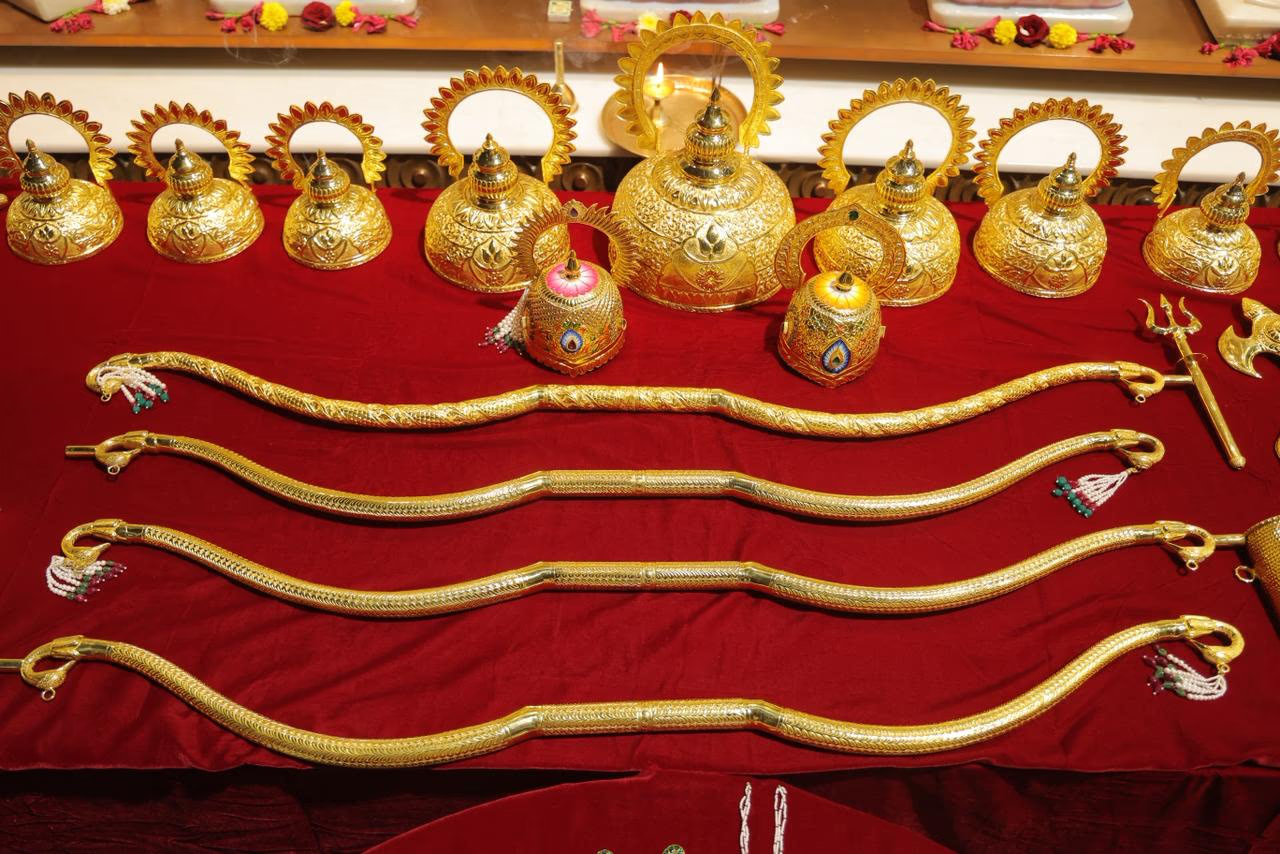
Source: aajtak
Bharata Ji's Attire and Posture: A Symbol of Dedication and Faith
Seated before Lord Rama and Sita in the Ram Darbar is Bharata Ji, the embodiment of service, dedication, and exemplary discipline. Donning a yellow silk dhoti, he symbolizes wisdom, purity, and positive energy. A blue shawl drapes over his shoulder, reflecting peace, stability, and trust.
A small gold crown graces Bharata Ji's head, with his neck adorned by various pearl and gold necklaces. Holding a floral garland in one hand, he embodies humility and devotion. His face is serious, humble, and contemplative. His posture conveys his total dedication, loyalty, and commitment at Rama's feet.
Shatrughna Ji's Raffish Raiment and Position: The Image of Selfless Service and Brotherhood
Standing near Sita in the Ram Darbar, to the right of Lord Rama, is Shatrughna Ji, known for selfless service, sacrifice, and devotion. He wears a purple shawl and a yellow silk dhoti. Purple symbolizes sacrifice and devotion, while yellow stands for service and purity. His garments are graced with beautiful gold embroidery.
A small golden crown sits atop Shatrughna Ji's head, with necklaces, bangles, and armbands showcasing him as a royal and disciplined warrior. Holding a flower in one hand and gesturing with the other, he displays humility and devotion. His serene staunch reflects his prioritization of dharma and brotherly love over kingdom, power, or honor.
The Majesty of Ram Darbar
The Ram Darbar's grand presentation is more than a collection of idols; it's live embodiment of ideal spiritual, devotional, and moral values. Each character's attire, posture, and position demonstrate how vital responsibility, love, and sacrifice are in every relationship. The combined presence of these figures portrays that forming an ideal society requires not just a king but the significance of family, servants, and allies alike. An exceptional aspect is the weekly change of garments for each statue, representing the traditional attire and fabrics of at least two Indian states each time. This not only portrays India's cultural diversity but also broadcasts a powerful message of national unity and harmony through the Ram Darbar.
